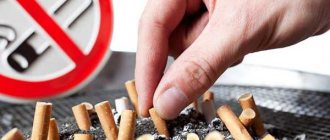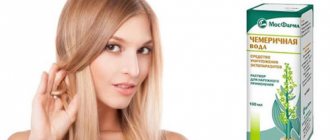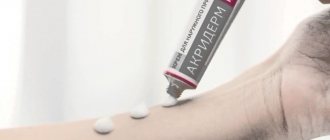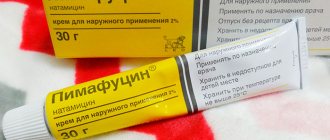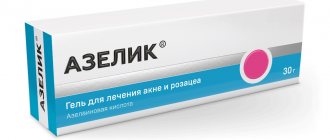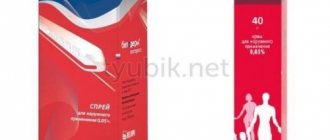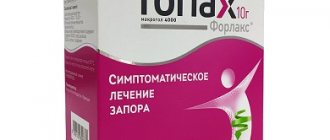The use of tar against various diseases has been known for a long time. The essential oils included in the composition have a wide range of therapeutic effects on the human body. The drug has an unpleasant odor, but quickly eliminates symptoms and does not require a long period of treatment.
Like any type of medicinal product, tar requires compliance with certain features in treatment. The instructions for using birch tar contain general recommendations for treatment; for more correct use, you should consult your doctor to prescribe a dosage, depending on the type of disease.
Release form
Birch tar is produced in the form of a medium-thick liquid with a sharp, specific odor. Can be from dark brown to black. Most often it comes in dark glass bottles.
Ingredients of the drug:
- purified tar;
- phenol;
- xylene;
- betulin;
- essential oils;
- resin.
Tar has the following beneficial qualities for the body:
- skin toning;
- reduction of pain symptoms;
- disinfection;
- diuretic;
- Antiseptic;
- cleansing;
- antipyretic;
- restoration of damaged epidermal cells.
In addition to its medicinal qualities, birch tar is widely used for cosmetic purposes to improve the condition of skin, hair and nails.
Tar soap
Tar soap can be purchased at a pharmacy. It is very popular as it helps to cope with many problems. Proper use of the product will help cope with psoriasis, diathesis, allergies, and improve the condition of facial skin.
You should use soap no more than 2-3 times a week. They lubricate the affected areas of the body with it, after wetting it. To improve the condition of your facial skin, simply wash your face with this product.
You can use soap to remove lice from adults and children. To do this, just rub the product into the scalp every day until the head lice completely disappears. It will not burn the scalp or damage the hair structure. It will help to quickly heal lice bites and stop their reproduction.
Soap is used to wash the genitals, as it has powerful antiseptic properties. The product helps women cope with the manifestations of thrush, and men prevent the development of STDs and infections of various types.
Indications for use
Birch tar has a wide range of uses, but is most often prescribed for the following situations:
- scabies;
- lichen;
- eczema;
- psoriasis;
- sycosis;
- seborrhea;
- pyoderma;
- throat and lung diseases;
- catarrhal cystitis;
- haemorrhoids;
- joint damage;
- antihelminthic effect;
- skin diseases of parasitic and infectious types;
- infection by pathogenic fungi of the feet and nails;
- oncological diseases.
In addition to all the above indications, tar is widely used to cleanse the body and prevent diseases.
Contraindications
The drug is well tolerated by the body and has virtually no contraindications for treatment:
- However, tar is prohibited from being used during pregnancy and breastfeeding.
- Experts also prohibit the use of the substance if kidney function is impaired. Otherwise, an exacerbation of the disease may occur.
- Tar is strictly prohibited in the presence of exacerbation of chronic diseases. Also, before starting treatment, you should conduct a test for individual sensitivity to the components.
Directions for use and dosage
Birch tar is used strictly on the recommendation of the attending physician. In individual dosages. Self-medication is not recommended. The drug can be used both for external treatment and for internal use.
Outdoor use
Tar is used to eliminate a large number of problems, but immediately before use it is recommended to dilute it with certain ingredients, depending on the type of disease.
The most commonly used methods are:
- Elimination of psoriasis - you need to take a liquid substance and mix it in equal proportions with butter. Add half a dose of copper sulfate and boil the resulting mixture. Apply with a cotton swab directly to the plaques once a day, the course of treatment is determined individually.
- Elimination of ulcers and lichen lesions of the skin . It is necessary to mix tar and petroleum jelly in equal proportions and apply to the damaged area with a cotton swab once a day. If necessary, you can use a bandage. Duration of treatment is 7 days.
- Elimination of foot and nail fungus - it is recommended to use applications impregnated with birch tar. Before application, it is recommended to thoroughly clean the surface of dirt and dry it for a period of treatment until the symptoms completely disappear.
Depending on the degree of damage, the drug may have different intensity of use. Experts recommend using the substance before bedtime and fixing it with bandages. In the morning, the skin surface should be cleaned with a soap solution and a special cleanser.
Inside
Greater results in treatment can be achieved if birch tar is used internally, but this type of treatment requires careful adherence to the dosage to prevent cases of poisoning.
The substance can be used for the following cases:
- Antihelminthic use . Used to eliminate various types of parasites. It is necessary to add a drop of tar to a spoonful of melted honey. Apply once a day before bedtime. One drop of tar is added daily, treatment duration is 12 days.
- Treatment of tuberculosis . It is recommended to add three drops of tar to a glass of water and consume it twice a day. Then drink it with carrot juice. Duration of treatment is up to 15 days.
- Treatment of lung diseases - add two drops of birch tar to a spoonful of honey. Use twice a day for 5 days. The mixture is recommended to be used before eating.
- Oncological diseases . You need to take two drops of tar twice a day with warm milk. The duration of treatment is no more than 15 days.
When using birch tar, you should consult a doctor and select an individual dosage in accordance with the characteristics of the body.
Tar water
Birch tar has a rather unpleasant smell and taste, so not every person can consume this type of substance. If necessary, you can use tar water, which has medicinal qualities and is used for both internal and external use.
Tar water is prepared as follows:
- you need to mix 3 liters of purified water and 150 ml of tar substance;
- mix the resulting composition and close the lid tightly, place in a cool, dark place;
- Mix the water daily with a wooden spoon;
- After 3 days, remove the top layer, pour the liquid into a glass container and consume as needed.
Recommended use:
- for preventive purposes;
- for the treatment of skin diseases;
- for cosmetic purposes;
- bladder disease;
- to relieve stomach pain;
- improved digestion;
- used to eliminate lung diseases and strengthen the heart muscle.
Care should be taken to ensure that the top layer is removed, otherwise symptoms of poisoning and other negative consequences may occur.
The liquid should be transparent, without any impurities. This liquid is stored in a tightly closed container for no more than 3 days. If any sediment appears, water must not be used for treatment.
Instructions for using tar
Like any medicine, birch bark tar has its own characteristics, so instructions for its correct use are needed.
Birch bark tar is a unique, cheap, effective, universal and safe remedy for solving many pressing problems - provided that it is used externally.
Much greater caution is required when used internally: reviews, contraindications and the official position of doctors clearly indicate the possible dangers and side effects.
Instructions for external use
When purchasing tar at a pharmacy, you will definitely receive not only a bottle with healing contents, but also detailed recommendations for its use - instructions.
The official external use options are:
- Spot application of the concentrate to affected areas (wounds, pimples, burns). The first application takes 10 minutes, then the time is increased to 25-30. After the expiration date, the tar is carefully washed off with soapy water, and the skin is moisturized with baby cream or ointment.
- A thin layer of tar is applied to the skin, then a bandage is applied. As a rule, less concentrated solutions of the drug are used.
- For severe skin lesions or acne in hard-to-reach areas, tar baths are effective. The prepared 100 ml of mixture (50% alcohol and 50% tar) is stirred in warm water. The procedure itself lasts 15 minutes.
These methods are indicated by doctors for eczema, neurodermatitis and psoriasis. However, you already know that birch tar treats not only these diseases.
Instructions for oral use (reviews, benefits and harm)
People often ask on forums: “Can birch tar be taken internally?” Traditional medicine knows several cases when this is really effective. However, not everyone is suitable for internal use - reviews from doctors and those who have dared to use unconventional folk methods differ and often diametrically.
Tar water relieves parasites, cough, tonsillitis, bronchitis, constipation, acne and fungal infections. The dosage of prepared “water” for adults is 2 tablespoons on an empty stomach, but unpleasant side reactions are possible.
Options for using tar internally:
1. For acne : treatment with birch tar orally with bread. To quickly cleanse the body, as well as against acne, a traditional remedy is used: before going to bed, eat a piece of bread that has absorbed 5 drops of tar (allergy testing of the drug begins with 1 drop). Don't eat or drink! The dose is gradually increased, the maximum is calculated individually (for some 7 drops, for others 10). Oral use for cleansing involves a course of up to 18 days.
2. Oral use against parasites . A drop of tar added to an evening portion of milk, carrot juice or a spoonful of aromatic honey will help you escape from uninvited guests of your inner world. It is unlikely that the taste and smell of the medicine will be eliminated, but taking it will not be so unpleasant. Add one drop every day: after a week you will no longer be taking one, but seven. Treatment of opisthorchiasis with tar (reviews of its high effectiveness make it the No. 1 remedy against helminths) requires a maintenance diet - the diet includes rye bread, vegetables and cereals.
3. For weight loss . A popular folk remedy reduces appetite, removes excess fluid, promotes the breakdown of fats, removes toxins, and also improves the functioning of the gastrointestinal tract. That is why the use of tar water internally for weight loss has proven effectiveness. The course takes 10 days, dosage – 2 tbsp. spoons daily before meals. To quickly achieve results, three courses are carried out with breaks of 10 and 20 days, respectively.
Only your doctor can tell you for sure whether you can drink birch tar. It is not recommended to use this folk remedy without consulting a specialist.
Tar soap: benefits and harms, reviews
In addition to the previously described “external” methods of combating acne, psoriasis, fungus and hair loss, it is worth mentioning another useful remedy - antiseptic tar soap. Both purchased and homemade, it helps in many cases.
Most often it is used for skin and fungal diseases, as well as to protect against bacteria:
- for nail fungus
- for lice
- for acne
- for dermatitis
- for dandruff
- for psoriasis
- when treating wounds and burns
- for thrush
Since the soap contains only a small proportion of tar (about 10%), it does no harm and has no contraindications, except that it dries the skin more than usual. The exception is allergic reactions, for which a test must be done in advance.
It is not difficult to prepare a home remedy: you will need tar (birch and birch bark - the differences are only in the name, they are the same preparation, so take any), water, grated “baby soap”, a tablespoon of olive oil (or avocado, jojoba, coconut – whatever you like) and 3-5 drops of essential oil – for aroma. Whisk the mixture and place in a water bath, then cool and leave for a couple of days to harden.
Reviews from the use of tar soap are positive.
Birch tar in cosmetology
There are a large number of different cosmetic products that are produced on the basis of birch tar. However, if necessary, it is possible to use a pure substance that is available in the pharmacy.
Using tar can eliminate the following problems:
- improve hair condition;
- eliminate dandruff;
- eliminate calluses and corns;
- cleanse your face of pimples and blackheads;
- eliminate cracks in the legs;
- get rid of nail fungus;
- lighten the skin.
To achieve the desired result, it is recommended to wash your face and hair with tar water.
In the presence of inflammatory and purulent formations, it is recommended to apply the substance in a targeted manner until the unpleasant symptom completely disappears.
When using birch tar, you should first of all determine your skin type and do not use large amounts for dry skin, as the substance tends to dry out the epidermis, which can lead to additional problems.
Benefits of tar for hair
The natural product is widely used in the manufacture of hair cosmetics. On store shelves you can see a wide variety of shampoos that contain birch resin. However, according to consumers, the best effect is observed if cosmetics are prepared at home. The most popular recipes include the following.
We recommend reading: Volodushka: medicinal properties and use of herbs in folk medicine
Strengthening shampoo. Grate baby soap on a coarse grater and take the same part of the tar. Mix everything and place the resulting product in a plastic bag. To wash your hair, it is used every other day, but before that the mass is added to red wine to prevent hair loss.
Anti-dandruff remedy. You will need tar water (how to prepare it was described in the treatment of psoriasis) in an amount of 50 ml, 2 chicken eggs and kefir - 250 ml. All components are mixed. Apply 2 times every 7 days for 2 months for six months.
Recipes for cleansing the body
The use of birch tar to eliminate toxins and waste from the body allows you to quickly and without harm cleanse the body and improve the functioning of internal organs.
You can use the following methods to cleanse the body:
- Tar and milk . Used to cleanse the body of harmful compounds and improve the functioning of the respiratory organs. To prepare, you need to heat 50 grams of milk and add one drop of tar substance. It is recommended to use this composition daily before meals, recommended in the evening. One drop of the substance is added daily. Cleaning duration is 10 days. If it is necessary to re-clean, you must take a break of at least 7 days. For cases of cleaning the reproductive system from infection, it is recommended to add 5 drops of tar to half a glass and use this composition for 14 days.
- Rye bread and tar . This method is used to clean skin surfaces from various defects, and also quickly removes all toxins and slag deposits. You need to eat a small piece of rye bread on an empty stomach, before applying 5 drops of tar to it. Every day the amount of birch tar should be increased by one drop to 10. After which the countdown is carried out until the amount of birch tar reaches 5 drops. This method of cleansing the body is recommended to be carried out once every six months.
- Honey and tar . Prescribed to strengthen the circulatory system and cleanse the blood. Accelerates metabolic processes in the body and removes harmful cholesterol. Used throughout the week, you need to add one drop of birch tar to a teaspoon of tar and consume it on an empty stomach. When using methods of cleansing the body, you should not abuse such methods for a long time; proper treatment is carried out according to the instructions. Otherwise, the opposite results may be achieved.
Getting rid of fungus
You can buy a useful product at any pharmacy. When making a purchase, it is recommended that you read the label for additional components. A product is considered to be of higher quality if the ingredients are contained in small quantities.
Recipes for preparing various ointments will be given in the following table:
| Name | Components | How to use |
| Tar with soda | Birch tar – 1 teaspoon; Baking soda – 1 teaspoon; Warm water – 2 tablespoons. | Mix all ingredients thoroughly and apply to the affected nail plate using a cotton swab. The ointment is applied for 30-40 minutes, then rinsed off using warm water, simultaneously removing softened pieces of the nail plate and skin growths. |
| Simple recipe | Birch tar – 5 grams; Baby cream – 1 tube; Gastrointestinal fat - optional. | Mix the ingredients, apply to the affected nail, dry and put on clean socks. The product can be left on for a day. In the evening, use warm water to rinse off. Use manicure scissors to remove the softened and peeled parts of the plate. |
| Sulfuric ointment | Birch tar - 3 teaspoons; Sulfur powder – 2 teaspoons; Baby cream – 1 tube. | To obtain a homogeneous consistency, it is recommended to warm all the components slightly. After mixing, you can apply the product to the nail, use a patch to fix it, and leave it on for about three hours. Applies for 7 days in a row. |
Use for weight loss
Reducing excess weight with the help of birch tar is achieved due to the following beneficial qualities:
- the diuretic effect helps to enhance the removal of fluid from the body, due to which fats are broken down;
- essential components have the ability to break down fat cells into smaller components;
- the use of tar reduces the feeling of hunger;
- eliminating toxins and waste;
- improving the functioning of the digestive organs, thereby accelerating the metabolic process.
To lose weight, it is recommended to use tar water. Before meals, it is recommended to drink 20 grams of water, twice a day. The duration of such use is no more than 10 days. After which it is recommended to take a break of 10 days and repeat the therapy. However, it should be noted that this method of weight loss is recommended to be combined with physical activity, otherwise the result will not be observed.
The use of tar for weight loss is prohibited in the following situations:
- age under 18 years;
- chronic diseases;
- allergic reactions;
- weakened immune system;
- increased sensitivity of the body.
To prevent the development of poor health, it is recommended to visit a specialist who will select the right nutrition to strengthen the effect obtained from using tar and reduce the likelihood of stomach upset.
Side effects
The use of birch tar may result in the following types of adverse reactions in the body:
- allergy;
- increased skin sensitivity;
- dryness and irritation on the skin;
- swelling of the skin;
- nausea and vomiting;
- stomach ache;
- stomach upset;
- decreased kidney function.
If such unpleasant symptoms appear, it is recommended to stop using birch tar and consult your doctor.
Oral use against parasites
Many positive reviews force us to pay close attention to the use of natural remedies to combat internal parasites. But not every person can take such a medicine.
We recommend reading: Medicinal properties and contraindications of wild strawberry leaves
The resin has a strong unpleasant odor, which often causes uncontrollable nausea and vomiting, and its taste leaves much to be desired. The most popular recipes include the following.
Apple juice and birch tar
Thanks to this remedy, a large number of parasites in humans are destroyed. For the first week, one tablespoon of juice mixed with a drop of birch resin is taken internally.
Then, over the next week, a drop of tar is added every day. On the 14th day of treatment, one tablespoon is mixed with ½ teaspoon of a natural component.
This dosage is maintained for 30 days while treatment is ongoing. Then there is a break for 90 days, and a repeat course for 5 days. For prevention, the product is used for 6 months, every new month from the 1st to the 3rd.
Honey and birch tar
To prepare the medicine, it is better to buy fresh honey with a thin consistency. There is one drop of resin per teaspoon, use before bed. Attention: after taking, do not drink water or eat food for 4-5 hours.
The next day, add 2 drops of tar to the same amount of honey, you need to gradually increase it to 8 drops. The course of treatment is designed for 12 days.
Use during pregnancy and lactation
Experts categorically prohibit the use of birch tar during pregnancy and breastfeeding. The active components of the substance tend to penetrate deeply into soft tissues and negatively affect the development of the fetus.
The ability to spread through the bloodstream allows the substance to pass into breast milk and be passed on to the baby. Medical professionals recommend stopping the use of birch tar several months before planning a pregnancy.
special instructions
The use of birch tar requires compliance with the following features:
- it is necessary to carefully monitor the absence of contact of the substance with the mucous membrane of the eyes;
- use with caution in old age;
- when applied in a thick layer, it can cause clogging of pores, which will lead to the formation of acne;
- if long-term treatment is necessary, it is recommended to monitor the condition of the urine, since long-term use of birch tar can negatively affect the condition of the kidneys;
- It is not recommended to use birch tar on open areas of the body in the summer, as the substance tends to increase skin sensitivity to sunlight;
- If itching occurs on the skin, the drug must be removed and the epidermis washed with soap and water.
Following the instructions will help reduce the likelihood of an adverse reaction and speed up the achievement of results.
How and against which garden pests tar is used
As a substance that acts primarily due to its pungent odor, tar in the garden is more effective against those pests that have a keen sense of smell, as well as underground inhabitants (where the smell does not erode and disappear longer) - mole crickets, small mice, moles . Treatment against them, in connection with the situation described above, is usually sufficient to carry out once a season; the repellent effect of tar in the soil lasts more than a month.
As a repellent, tar in the garden can also be successfully used against flying insects (Colorado beetle, butterflies, moths, flies, sawflies, etc.) and ground rodents - however, it has a weaker effect on them and takes less time, about 20 -30 days, so treatments will have to be repeated.
Tar has the weakest effect (several days) on ants and most adult beetles (bronze beetles, click beetles, weevils). Fighting these pests with tar alone will not be entirely successful; you will have to combine it with other drugs.
Tar in mixtures is incompatible with almost all synthetic pesticides and biological products - it is even recommended to store them in different rooms. But the product combines well with minerals and natural extracts. Their combined use even enhances their mutual effect.
So, what pests and diseases does tar help against in the garden? Here are 21 ways to use this popular product.
Birch tar from the Colorado potato beetle
Potatoes, eggplants, tomatoes and peppers will thank you if you spray them with a tar solution against the Colorado potato beetle.
The solution is prepared as follows: 10 ml (2 tsp) of tar and 50 g of laundry soap are dissolved in 10 liters of warm water. You can spray the plants with it (before the start of flowering, during the appearance of buds and during the period of intense flowering) or generously moisten the bushes, as well as the soil between the rows until a wet film forms on the leaves.
Birch tar from the mole cricket
Tar will help save your plants from mole crickets in several ways.
The first is the treatment of seed and planting materials - for example, lubricating the tubers with an undiluted preparation. The second method is to spray the already risen plants with the above-described tar-soap solution (soap here acts as an adhesive).
Birch tar from moles (hamsters, marmots)
Moles, hamsters, marmots and other burrowing mammals can also be expelled from the site in different ways. For example, by plugging all discovered entrances to their burrows with pieces of cloth, richly soaked in undiluted tar, and covering them with earth. For such impregnation, you can also use a tar-oil mixture (3 parts tar to 1 part vegetable oil). It is better to start all these activities in early spring; in the summer it may be too late.
Another way is to drive small (about 20x4 cm) wooden pegs throughout the area at a distance of 3-4 m from each other, generously greased with tar at the bottom. If necessary, they can be dug up from time to time and the “fragrant” treatment renewed.
Birch tar from hares (mice, voles)
To protect trees and shrubs from rodents such as mice and hares, autumn mulching of the tree trunks of plants with sawdust soaked in tar solution (1 tablespoon of tar per 10 liters of water), and autumn whitewashing of the bottom of trunks and lower branches with a special solution (10 liters of fresh manure, 1 kg of ready-made whitewash and 3 tablespoons of tar, dilute with water to the consistency of thick kefir).
Birch tar from onion fly
To get rid of the attention of the onion fly, it is recommended to soak the planting material of onions and garlic literally half an hour before sowing in a tar solution (1 tsp of tar per 1 liter of water).
After germination of the seedlings, it is also worth watering the rows of these plants with a solution prepared from 10 liters of water, 30 g of soap and 1 tbsp. tar, repeating the procedure again after 10-15 days.
Mulching the beds with sawdust soaked in a tar solution also helps (see preparation diagram above).
Birch tar from cabbage fly
To combat cabbage fly on cruciferous crops (radish, cabbage, turnips, horseradish, etc.), a tar solution is used (1 tablespoon of tar per 10 liters of water), which is poured onto beds mulched with sawdust. The procedure is carried out in early spring and the mulch layer is renewed in early August.
Birch tar from sea buckthorn fly
A fly that damages sea buckthorn plantings can also be repelled by the smell of birch tar. To do this, small containers with it are hung inside the bush or pegs wrapped in rags soaked in tar are driven in nearby.
Birch tar from carrot fly and psyllid
Tar also helps carrots - to escape from carrot flies and psyllids, which also do not like its smell.
You already know the recipe - 10 liters of warm water + 1 tbsp. birch tar. Carrot beds are watered with this solution on pre-moistened soil twice a season (in July and August). If the insect infestation is large, you can water the beds a couple more times, and also spray them - then 20-30 g of soap shavings should be added to the above solution as an adhesive.
Birch tar from sprout fly
Treatment with the solution described above also helps against germ flies on all pumpkin crops (cucumbers, zucchini, pumpkin, squash). Vegetable seedlings are sprayed with a solution against this pest.
Birch tar from sawfly
There are several types of sawfly (gooseberry, cherry, etc.) that damage a wide variety of plants: white and red currants, gooseberries, cherries, pears, plums, apple trees. However, all these pests cannot tolerate the smell of tar, so they can be successfully controlled using this product.
The bushes are sprayed 3-4 times per season with the following mixture: dissolve 100 g of grated laundry soap, half a glass of ash and 2 tbsp in 1 liter of boiling water. tar, dilute the mixture with 5 liters of warm water.
The trees will also have to be sprayed several times a season (at the beginning of the leaves blooming, and then, if necessary, at weekly intervals) with a solution already familiar to you: 10 liters of water, 1 tbsp. birch tar, 30 g of soap.
Birch tar from wireworm
Potatoes, carrots, beets, radishes and other root vegetables need to be protected from wireworms, including this can be done with the help of tar.
In advance, you can etch the seed for 40-50 minutes in a tar solution (1 tablespoon of tar per 10 liters of water) and moisten the wells with the same solution before planting. Plants grown from seeds are simply watered with this solution several times a season at intervals of 2-3 weeks.
Birch tar from aphids
Copious spraying of plants with a tar solution a couple of times a season at intervals of about a month helps against aphids.
The solution is prepared as follows: 50 g of tar soap is crushed, dissolved in 1 liter of boiling water and stirred. After complete dissolution, add 1 tsp. tar and another 20 liters of water.
Birch tar for ants
If we already mentioned aphids, let us immediately remember their almost constant companions - ants, against which tar also helps to fight.
Trees on which ants “graze” aphids are generously smeared with undiluted tar along the trunk or wrapped in rags soaked with it - constructing a kind of hunting belt. If the ants have settled right in your garden, you can pour a few milliliters of pharmaceutical tar on the top of the anthill - the insects definitely won’t like it, and they will most likely leave the inhospitable area.
Birch tar for spider mites
If you notice signs of spider mite activity on your plants, treat these places with a soap-tar solution that is already familiar to you (10 liters of warm water + 10 ml (2 tsp) tar + 50 g of laundry soap), paying special attention to the underside of the leaves .
Birch tar from cabbage whiteweed
The cabbage butterfly (cabbage white butterfly), familiar to all gardeners, can easily be scared away from plantings by its tarry smell. To do this, place pegs in the garden, wrapped at the ends with rags soaked in undiluted birch tar. Additionally, sawdust soaked in a water-tar solution can be laid out on the beds - this will also help against other insect pests.
Birch tar from gooseberry moth
The gooseberry moth, which harms gooseberry and currant thickets, actively damages the ovaries of these plants. To combat it, before flowering, berry bushes should be sprayed with a tar solution (1 tablespoon of tar and 20 g of soap shavings per 10 liters of water), and then simply hang containers with tar on the branches inside the bush.
Birch tar from codling moth
Garden plantings very often suffer from the “work” of the codling moth. Apple, cherry, plum - all its types are equally dangerous and can destroy up to half the crop. The caterpillars of this insect spend the winter period under the bark of a tree, and during the flowering period, having already turned into butterflies, they begin laying eggs in the lower part of the leaves. The moths that hatch from them feed on the fruits.
Therefore, while the butterflies have not yet flown out (at the beginning of flowering) and immediately after flowering, the trees and the soil under them can be sprayed with the already familiar odorous tar solution with water and soap. Small containers with tar solution (1 tsp of tar per 5 liters of water), suspended in the crown of trees shortly before they begin to bloom, will also be useful.
Birch tar from hawthorn
Hawthorn larvae work on crops of the Rosaceae family (apple, cherry, pear, plum, apricot, etc.) similar to the codling moth, actively eating buds, young leaves and buds, only the insect overwinters in nests located on the leaves, which are pre-wrapped with cobwebs . These nests need to be removed first. Then the soil under the tree and the plant itself are treated with a tar solution (traditionally, 1 tablespoon of tar and 30 g of planed soap are taken per 10 liters of water). The first treatment is carried out in the “green cone” phase, the second – shortly before flowering (April), and the subsequent ones immediately after flowering with an interval of two weeks (depending on the presence of caterpillars).
Birch tar from raspberry-strawberry weevil
Raspberry, blackberry and rose hip bushes are often damaged by the raspberry-strawberry weevil: dried ovaries are clear proof of this. Therefore, before the buds appear, the berry bushes should be generously sprayed with a water-tar solution with the addition of soap (see recipe above). After a week, the procedure can be repeated.
Birch tar from cherry weevil
The cherry weevil feeds not only on leaves, but also damages young shoots of stone fruit trees, buds, ovaries and inflorescences, and after the fruits ripen, it gets to them. To combat this pest, also dissolve the familiar mixture of tar and soap in a bucket of water and thoroughly moisten the trees from the sprayer with this fragrant solution. Carry out the procedure in early spring before the buds open, then repeat when the buds open and shortly before flowering.
Birch tar against scab and other bacterial and viral diseases
Tar can also save your plants from many bacterial and viral infections that can leave you completely without a harvest. To prevent their development, fruit trees and shrubs are generously treated with the above-described tar-water solution with the addition of soap (only more tar should be taken, 1.5-2 tbsp.) or lubricated with a mixture of undiluted tar and ash (2:1) the period of appearance of young leaves.
Drug interactions
The drug is not recommended for use with other types of substances with similar effects on the body. Preparations containing sulfur and salicylic acid tend to enhance the effects of birch tar on the body. Therefore, this feature should be taken into account before use.
Storage conditions and expiration dates
The birch tar substance should be stored in a dark place out of reach of children. The shelf life of the substance is 5 years from the date marked on the packaging. Do not use after expiration date. When heated or frozen, it tends to lose its medicinal qualities.
Composition and beneficial properties
Birch tar contains:
- resins;
- cresols;
- phenol;
- benzene;
- salicylic acid;
- organic acids;
- Guaiacol.
The rich composition determines the beneficial properties of the drug. The benefits of tar are as follows:
- acceleration of regeneration processes;
- improving the growth of new skin cells;
- disinfection of damaged areas;
- cleansing skin pores;
- elimination of allergic rashes;
- restoration of the reproductive system;
- removal of stones from the urinary system;
- improvement in diseases associated with genetics.
The mechanism of action of the drug on the body is quite simple. First of all, the product penetrates into the deep layers of the skin, where it begins to actively influence cells, promoting their healing and stimulating division. At the cellular level, tar affects tumors, preventing them from developing into cancer. Due to the active substances, blood circulation improves and the entire body heals.
The resins contained in the composition cope with pressure surges, strengthen blood vessels and normalize heart function.
Analogs
Birch tar is a natural preparation, so there are no analogues that would match the composition and effect on the human body.
However, if necessary, it is possible to use the following drugs:
- Sulfur-tar ointment - the drug contains natural ingredients that are widely used to eliminate various diseases of parasitic origin on the skin. It has an antibacterial and anti-inflammatory effect and is prescribed for external use only. Has the property of causing allergic reactions. For external use only. The average cost is from 40 rubles, depending on the volume of the container.
- Vishnevsky ointment - the substance is produced in the form of an ointment with a thick consistency, has an unpleasant odor and bitter taste. It is used to treat almost all types of skin diseases, as well as hemorrhoids. In individual cases, it may be prescribed for internal use under the supervision of a physician. The substance has a high level of antibacterial effect on the skin and is recommended for use in cases of purulent formations. Average price 60 rubles .
- Konkov's ointment with tar is a preparation for external use prescribed for the treatment of various skin injuries. It has a high level of elimination of purulent formations, improves the natural processes of skin cell regeneration. It is used to restore burn damage to the skin and to eliminate inflammation in hemorrhoids. Cost 120 rubles .
- Ichthyol ointment is an antiseptic substance used to treat various skin diseases. Prescribed to accelerate the healing of wounds and burns. Used to relieve inflammation and eliminate pain symptoms. It is used to treat various types of parasitic and fungal skin lesions. Does not require a doctor's prescription, is available in free quantities at the pharmacy. Cost 40-50 rubles .
- Wilkinson's ointment - is prescribed to eliminate allergic reactions on the skin, as well as to eliminate inflammatory formations. For external use only. It has the ability to eliminate nail fungus and other types of parasitic skin lesions. It is forbidden to use in cases of impaired renal function or individual intolerance. It is recommended to consult with your doctor before use.
Ichthyol
Ointment according to Vishnevsky
Wilkinson's ointment
Each type of drug may have its own characteristics of use and cause individual side effects. Before use, it is recommended to consult a doctor and obtain an individual dosage, depending on the type of disease.
The use of birch tar can eliminate a large number of problems and improve the functioning of human internal organs. Widely used for cosmetic purposes and against skin diseases.
Experts recommend gradually increasing the dosage of the substance and not self-medicating, otherwise side effects and deterioration of the general condition may occur.
Features of tar and its healing properties
Birch tar in folk medicine is known primarily for its antiseptic and anti-inflammatory properties. Previously, it was also used to treat domestic animals for lichen and parasites, and to treat the hooves of horses and cattle.
What does birch tar look like and how is it obtained?
It is a viscous, black, thick, but not sticky liquid, with a specific pungent odor and taste. In reference books, the smell and taste of this substance is defined as yuft. Yuft is a special type of soft leather that Russia was famous for. Tar was precisely used for making yuft leather. By the way, tar has been the symbol of Russia for many centuries. Foreigners believed that Russians smelled of yuft and tar. It is obtained from birch bark by dry distillation. This is a method of wood processing in which the material is heated at high temperatures without oxygen, resulting in the formation of various resins and chemicals. Tar is boiled in special factories called tar factories. In addition to birch bark, pine, spruce, and aspen are used for cooking. But only birch tar is used as a medicine.
Pharmacological action and chemical composition
The instructions for use of tar indicate its main pharmacological action as an active antiseptic. How does this substance work?
- Heals wounds well, relieves inflammation, restores damaged tissue, and stimulates natural keratinization of the skin.
- It has a local irritating effect, which leads to improved blood supply, accelerated outflow of purulent fluid, and resorption of infiltrate (compaction) from the blood and lymph under the skin.
- In addition, it has insecticidal properties - it destroys parasites and harmful insects.
- People also credit this remedy with miraculous antitumor properties.
What does it contain? When processing birch bark, useful resinous substances, organic acids, and phytoncides appear. Phenol and its derivatives are of great value - they are one of the effective antiseptic, preservative and analgesic agents. But it is also important to know that phenol is poisonous and in large quantities can harm the body.
Pharmacy drugs
You can purchase various types of tar products at the pharmacy. All of them are intended for external use only. Their benefits in dermatology and cosmetology are undeniable!
- Tar soap. It comes in liquid form and in bars. Used in cosmetology and dermatology. You can also purchase tar shampoo to care for hair and problematic scalp. Tar balm with the addition of sea buckthorn and calendula oil is used to care for problem skin of the face and body.
- Ointments with tar. At the pharmacy you can buy combination ointments of Vishnevsky, Konkov, Wilkenson. They are prescribed by a doctor for various skin diseases. These products have a drying, astringent, antimicrobial, and wound-healing effect.
- Pure tar. Sold in glass bottles of different sizes (20, 40, 50, 80 ml). Shelf life is long - 5 years. Used as an external antiseptic and insecticide (a good anti-pediculosis agent).
List of indications
- Tar in various forms is prescribed for skin diseases caused by parasites and fungi, including fungi of the genus Candida (candidiasis, thrush). This also includes: scabies, various types of lichen, eczema, psoriasis, neurodermatitis and other skin problems. Treatment of psoriasis with tar is accepted in traditional medicine, and is still considered an effective method of therapy.
- Bacterial skin lesions with purulent processes: boils, pimples, abscesses, ulcers, inflammation of connective tissue, lymph nodes, hair follicles.
- Traumatic lesions: burns, non-healing wounds, frostbite, bedsores and necrosis.
What are the contraindications of tar? The drug is prohibited during pregnancy and lactation due to the content of toxic substances. It is used externally in children with caution and under medical supervision. You should abstain from the drug during periods of severe exacerbation of eczema, or in cases of kidney and liver dysfunction. Often there is individual intolerance to the substance and an allergic reaction to it in the form of itching and rashes. Most often, allergies appear after prolonged use.
Reviews
Marina Maksimova
Gastroenterologist, Candidate of Medical Sciences and editor of articles at gastro911.com. For more than 10 years I have been helping to recover from gastrointestinal diseases.

